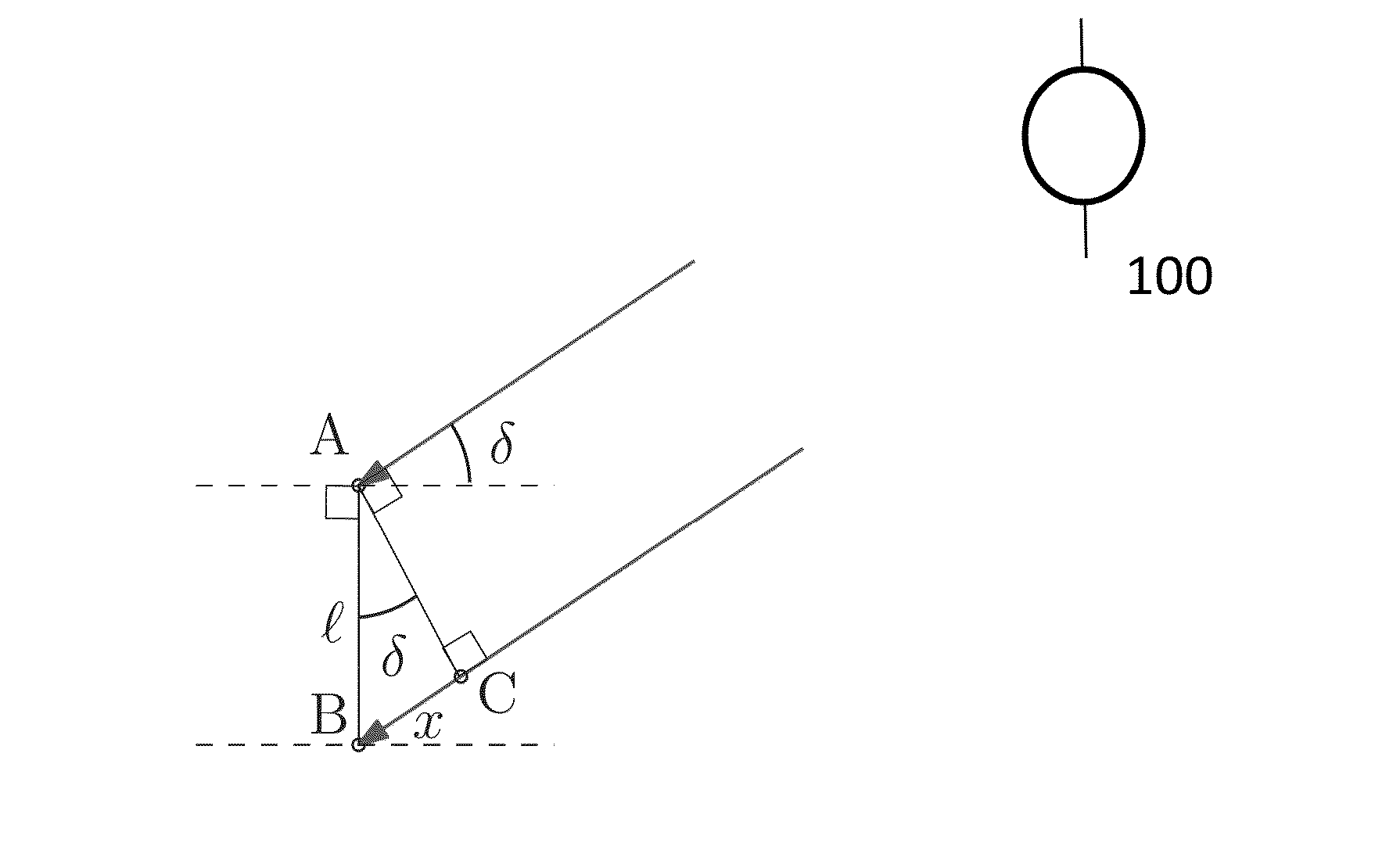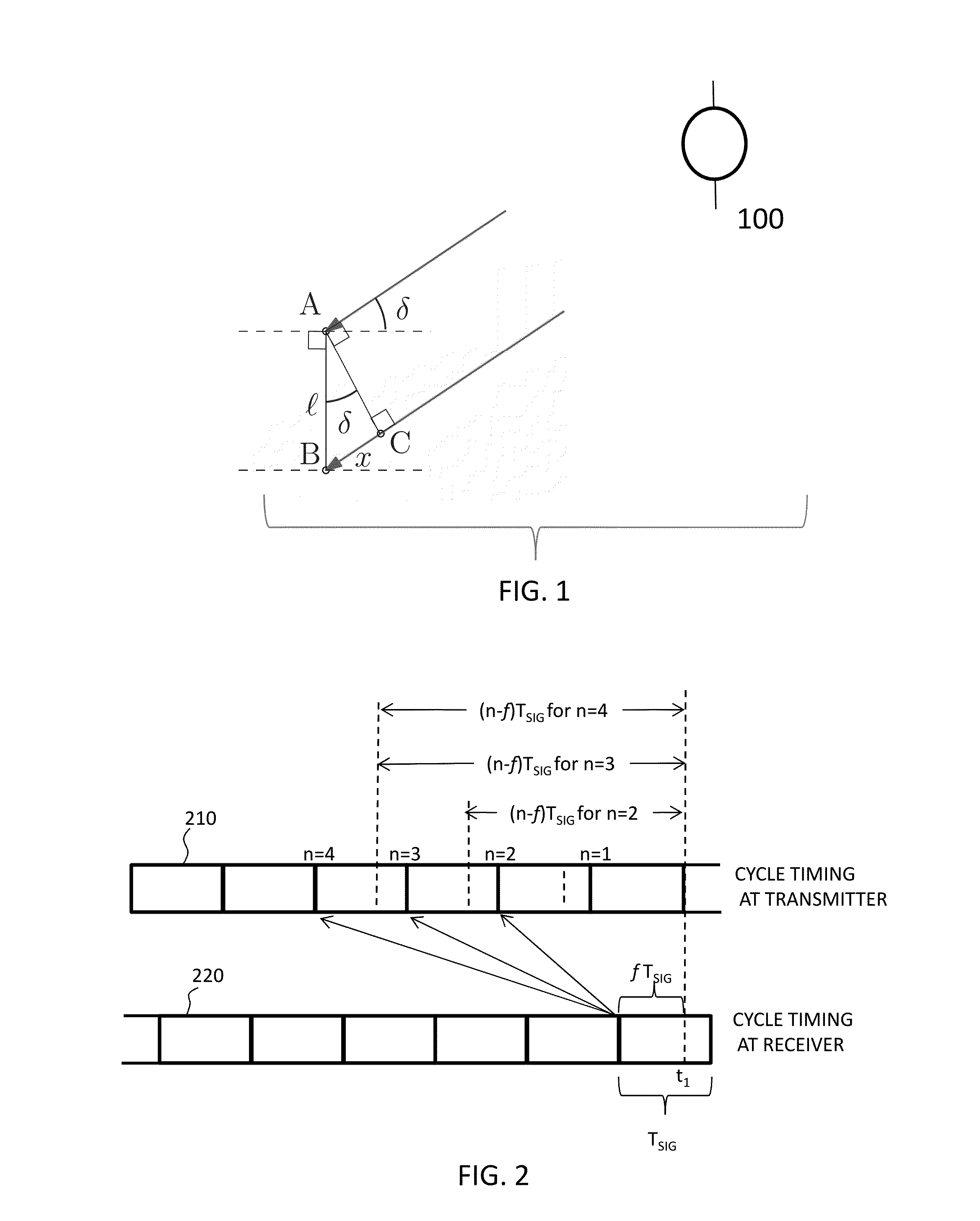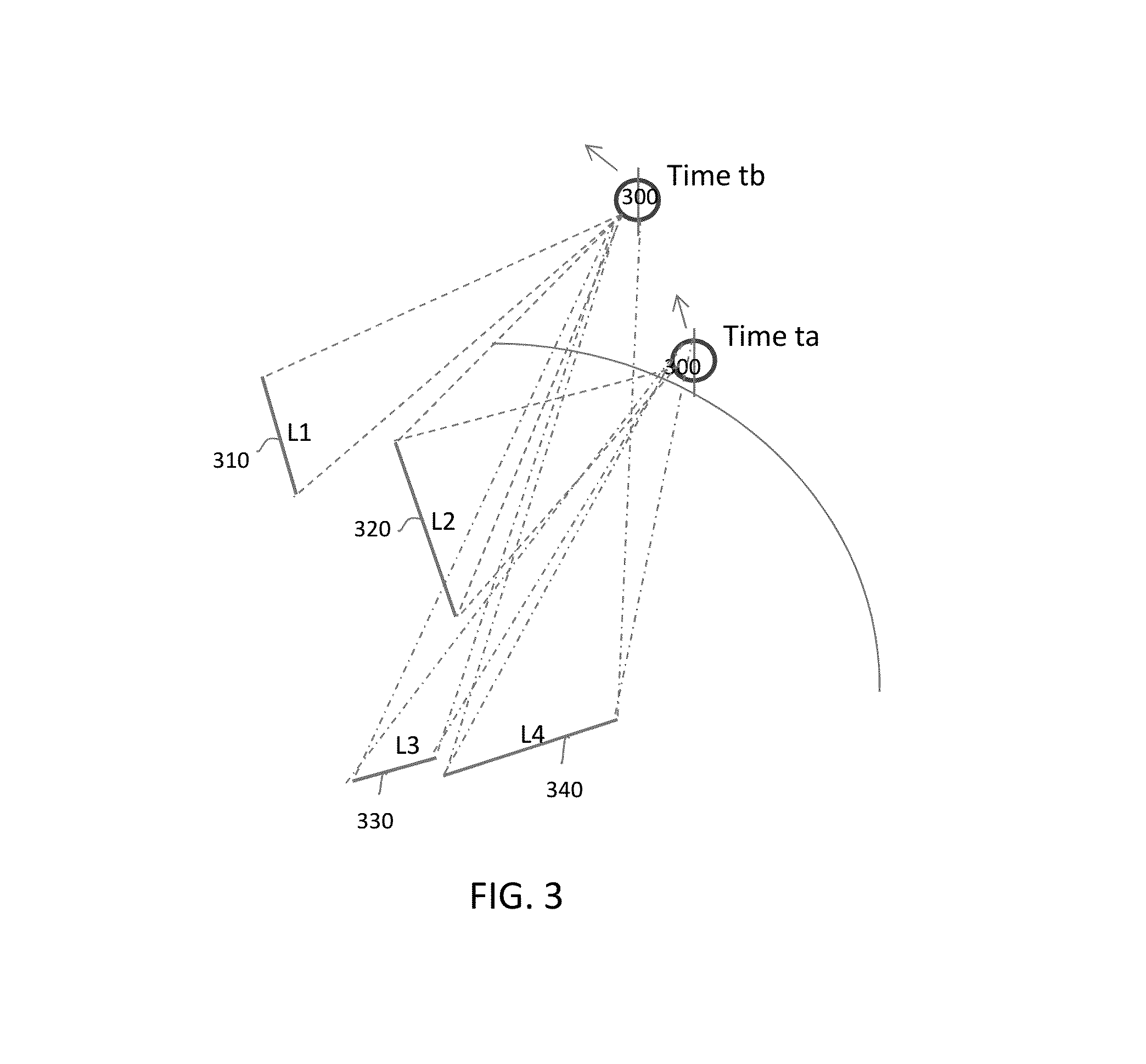System and method for interferometrically tracking objects using a low-antenna-count antenna array
a low-antenna-count, interferometric tracking technology, applied in the direction of direction finders using radio waves, instruments, reradiation, etc., can solve the problem of large array, and inability to detect direction, etc. problem, to achieve the effect of large array, large effect on direction determination, and large amount of antennas
- Summary
- Abstract
- Description
- Claims
- Application Information
AI Technical Summary
Benefits of technology
Problems solved by technology
Method used
Image
Examples
example
[0077]In one example, the model motion is that of an object moving at constant speed in one dimension in s=sin δ space; linear motion as a function of time,
skpred=spred(tk)=s0+{dot over (s)}(tk−t0). (9)
where s0 and {dot over (s)} are the intercept and slope from the linear least squares fit. While typically orbital motion is nonlinear over long time periods, for short arcs linear motion may work well, so is sufficient for evaluating simulation results.
[0078]Sample observation data from a two-baseline interferometer was generated at each time step from the direction s computed according to the model motion using the PDF p(f1, f2|sk). This is generated with an acceptance-rejection Monte Carlo method. Modes sequences are determined as discussed above based on this observation data, and a list of mode sequences with estimated parameters produced. This list is ranked by posterior probability weight, with the posterior probability weight providing a gauge of the likelihood of that combi...
PUM
 Login to View More
Login to View More Abstract
Description
Claims
Application Information
 Login to View More
Login to View More - R&D
- Intellectual Property
- Life Sciences
- Materials
- Tech Scout
- Unparalleled Data Quality
- Higher Quality Content
- 60% Fewer Hallucinations
Browse by: Latest US Patents, China's latest patents, Technical Efficacy Thesaurus, Application Domain, Technology Topic, Popular Technical Reports.
© 2025 PatSnap. All rights reserved.Legal|Privacy policy|Modern Slavery Act Transparency Statement|Sitemap|About US| Contact US: help@patsnap.com



